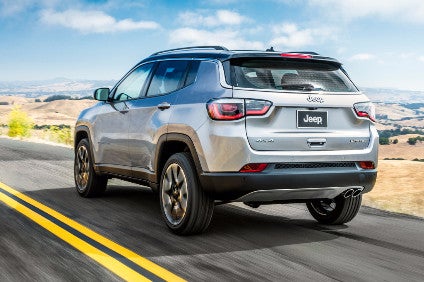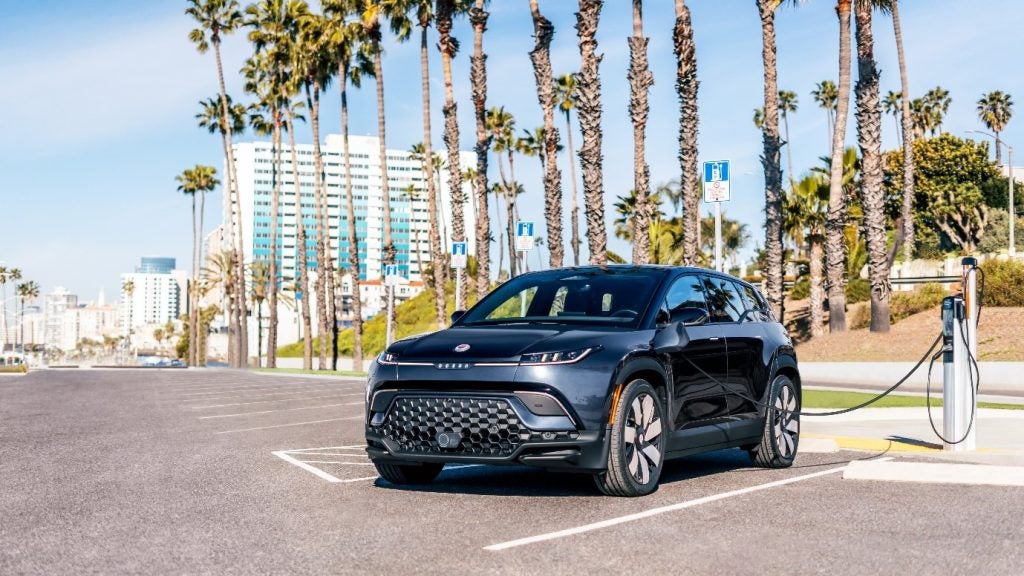
This is our Hands-On-Tech (HOT) reporting series. Here, we take a look at the top-spec connectivity features offered by manufacturers in detail, looking to benchmark the connectivity functionality based on various test criteria. The Jeep Compass is fast becoming a global best-seller, biting at the heels of its rivals in almost every key market including the US, India and Europe. But is all this glory a little misplaced? Performance-wise, not one jot. But if Jeep want this love affair to last forever, they need to make some major tweaks.
Switchgear
The switchgear of the Jeep Compass is comprehensive. Like Volvo, FCA’s approach to managing the transition in the digitisation of the switchgear is to provide every possible option and allow the driver to choose how they best prefer to operate that particular function. While the breadth of choice is commendable, the duplication is confusing and it could be argued that allowing drivers to control functions based on “what they are used to” will not help the transition progress quickly. What’s the rush? Avoidable costs are being unnecessarily added to the price of the vehicle.
The Jeep Compass’ steering wheel controls are novel. The left side buttons toggle between the audio sources, while buttons behind the wheel – pressed with index and middle fingers – move between stations. Ergonomically designed, this is a pleasant discovery. However, it did serve to highlight just how spaced out the controls were, making the adjustment of cruise control speeds much more onerous for smaller hands. The joystick style, featured in other vehicles in this series, works much more effectively in this situation.
Rather than needing to look down to a horizontal console, the Park Assist button is found on the vertical console, just under the display. This is helpful for the driver’s peripheral vision, to continue to monitor the ever-changing parking environment and feels much safer.
Next to the Park Assist is the button to turn off the parking sensors. Tesla – at last check, bearing in mind its ability to send a new iteration to the car remotely – features this as a digital option nested in the settings menu (and there’s a wide range of choice to determine exactly which chimes you want to disable). Given the sensitivity of the parking sensors (parked behind a wall and both the display and chime was going crazy even though the car wasn’t moving), it is convenient to have this one simple button so quickly accessible. It resets on each drive.
Display
The Compass’ sizeable 8.4″ screen is really responsive, though the capacitive screen didn’t like our woolly gloves – only intermittently responding to the selection. At first, the amount of information on the one frame seems overwhelming, but you can toggle the display to be more simplistic. The bottom inch or so features the seven hexagonal shortcut buttons. The design of the interface is specific to the UConnect system, which features in all FCA models, and so it is apparent very quickly which brand of car you are in. A negative result of this unique design however is that there is less familiarity, which is distracting and the system doesn’t seem particularly intuitive initially.
How well do you really know your competitors?
Access the most comprehensive Company Profiles on the market, powered by GlobalData. Save hours of research. Gain competitive edge.

Thank you!
Your download email will arrive shortly
Not ready to buy yet? Download a free sample
We are confident about the unique quality of our Company Profiles. However, we want you to make the most beneficial decision for your business, so we offer a free sample that you can download by submitting the below form
By GlobalDataVoice Control
There is no onboard data connection. As a result, the onboard natural language processing (NLP) is noticeably slow and rather inaccurate. Overall, the usability is incredibly frustrating.
Initialising the voice control on the steering wheel (one short press for the proprietary system, one longer press for Siri or OK Google), brings up a menu of suggested commands. Regardless of the command, the system tends to respond from the telephony menu and, once in that menu there’s no quick or easy to get back out without cancelling and starting again. Unsurprisingly, the telephony feature is very responsive and smooth, with the system picking out multiple numbers for certain contacts and clearly offering choice. The system is less comfortable with foreign-sounding names, but at least acknowledges this with a friendly ‘Shall we try that command again?’
We rated the voice control feature for both natural use and accuracy one out of five, where there was very little or no understanding, taking into account syntax and response time.
Networking
Surprisingly, the Compass accesses data signals through a tethered mobile device. As a result, there’s no WiFi hotspot option – a shame in a model of this quality.
Companion App and Telematics
The UConnect LIVE companion application enables a user to connect with the vehicle, whether they are an owner or not. This is definitely a positive, given the growth in car sharing and car club schemes. UConnect LIVE enables the driver to link the connectivity suite to existing web accounts, such as TuneIn, Deezer, Facebook and Twitter. We couldn’t get Facebook to authenticate, but Twitter logged in, which could only be done once the car was stationary and the engine was off.
It was quite a surreal experience listening to a computerised voice read all the latests tweets in your feed out to you. There was misplaced emotion and no sense of wanting to take each one, listen, like it and move onto the next. It was just a list. There was also difficulty in composing one to send, which you understandably couldn’t do while the vehicle was travelling. We currently await data from FCA about what percentage of customers actually use this.
The TuneIn app is great as it acts as a platform to access podcasts such as Desert Island Discs and This American Life. However, if a driver is tethering their phone, chances are they already have an app for this, which should be able to be used through the USB or bluetooth functions.
We had some very bizarre experiences when connecting our phones, finding that the audio files the system accessed from the phone via a cable tended to be voice files stored elsewhere on the phone. Rather than specifically looking for music files to play via USB, it would automatically select audio recordings. This happened across both Android handsets. If CarPlay or Android Auto is connected, the output can be controlled through this interface, but the proprietary system doesn’t offer as much control.
TomTom LIVE traffic updates are enabled through the UConnect LIVE app and this worked as expected. Jeep Skills and eco:Drive are fun monitors accessing driving skills and providing tips. Though there wasn’t any specific driver profiling, in relation to the car i.e. automatic seat adjustment, playlist, etc., the Jeep Compass’ system allows personalised settings to the key fob.
Audio
Despite a number of complaints on forums from customers claiming the premium sound system doesn’t sound very premium, our experience of the Beats speakers was excellent. A great brand collaboration, the surround sound could be toggled on and off as needed and the rear passengers felt their sound experience was notably improved when it was on. It would have been good to see a Volvo-style selection of audio locations, i.e. concert hall, studio, lounge, since these presets are much easier for the non-audiophile consumer.
Usefully, there are microphones on both driver and passengers sides, making the quality of calls, in particular, far better. Even those pesky audio recordings sounded pretty good!
Navigation
For the first time in the series, we had to give up trying to set the navigation with voice control. The manual input, however, isn’t a great deal less frustrating, due to the unnecessary menu nesting. There were some eight steps to set the route, over double that of the Peugeot 3008. The navigation menu does not use postcodes. Selecting ‘United Kingdom’ (third step in), the system then asks for the exact country (i.e. England, Scotland, Wales), town and so on and so forth.
Adding a waypoint was confusing too. Rather than select ‘add waypoint’ at the start of the process, the driver is expected to key in the destination as though they were setting it all again—first-time user fear had us wondering if it would overwrite the original route. With frequent use, this wouldn’t be a problem, but it goes to demonstrate some of the lack of intuition. There is no standardisation for such a user experience (UX) journey, but this would highlight the need to have one to maximise consumer familiarity, comfort and safety.
Points of interest were comprehensive and as expected. Part of the MOPAR® Map Care programme, the Jeep Compass is eligible for a map update every three months for three years from the date of first registration. Owners can log in to a web portal with the VIN number and download the maps to transfer to the car via USB. This is another example of how helpful OTA (over-the-air) updates would be and how relying on a customer-tethered network connection has its drawbacks.
We rated the Jeep Compass two out of five for intuitive navigation design, where the system shows an acceptable presentation, lengthy nesting and somewhat unnatural UX. We scored the Compass one of out three for route accuracy, where system failed to find destination on multiple tries, offered an inaccurate ETA and offered little or no rerouting.
Telephony
The Jeep Compass’ telephony system tethers from the driver’s handset. Though CarPlay and Android Auto both offer this function, the proprietary system performs strongly here. We rated the system five out of five for clarity of calls made and four out of five for the ease of using the voice control function, since the system did not seem to cross reference the imported names and numbers for better voice response.
Hardware
Commendably, Jeep has integrated two USB ports; one in the front, one in the rear. Both support the mirroring applications and charge devices. There is a 12V port in the front centre console and a 115V power outlet in the rear. This requires a smaller travel plug and can only really power small electronic devices, such a rear DVD player or phone (faster than the USB port would offer).
ADAS
The performance of the vehicle is truly outstanding. Lane departure assist steers to maintain lane centre accurately, while the reminder to place hands firmly on the wheel is an indication of the direction Jeep is taking in the development towards self-driving vehicles. The cruise control isn’t auto adaptive and due to the aforementioned button spacing issue, isn’t the most intuitive configuration, but it works, eventually.
The Park Assist feature was one of the best we’ve tested so far, quickly identifying parking spaces and making swift progress in getting the car parked safely. The 360-degree camera works as expected and combined with the digital display on the cluster of which sensor is picking up an obstacle (or not), it is easy to double check around the vehicle when manoeuvring—particularly helpful given its size.
The previously mentioned sensitivity of the sensors means the pre-collision warning triggers often, particularly when overtaking a vehicle on the motorway, screaming the words ‘BRAKE!’ on the cluster display. Arguably, better safe than sorry, but some drivers may become a little ‘Boy who cried wolf’ blind to such a warning.
Conclusion
The appeal of the Compass is broad and as such, it tries to be everything to all. This has resulted in less focus on the areas that really matter, perhaps under the assumption that CarPlay and Android Auto will dominate in any case. Stereotypically, the Jeep’s navigation leaves a lot to be desired and leaves the driver referring to Google Maps on their handset just to double check. The designers have even made the route blue and the car’s progress orange, despite almost all other providers using blue to track the car. Initially, we did end up following the blue line, rather than the orange one, due to the inversion. Equally, the voice control needs some attention, though this no doubt can be resolved by adding independent connectivity to the vehicle. All in all, the Jeep’s system seems a little half-baked, where things work well in places and, in some places, really well. Overall, however, it’s mediocre….and thus makes its own case for using a handset mirroring option.
Other models in the Hands-On-Tech (HOT) series
*This article is an extract from a report that first appeared in our QUBE service. The QUBE article is accompanied by a comprehensive data sheet with our full evaluation of the Jeep’s connectivity and HMI.







